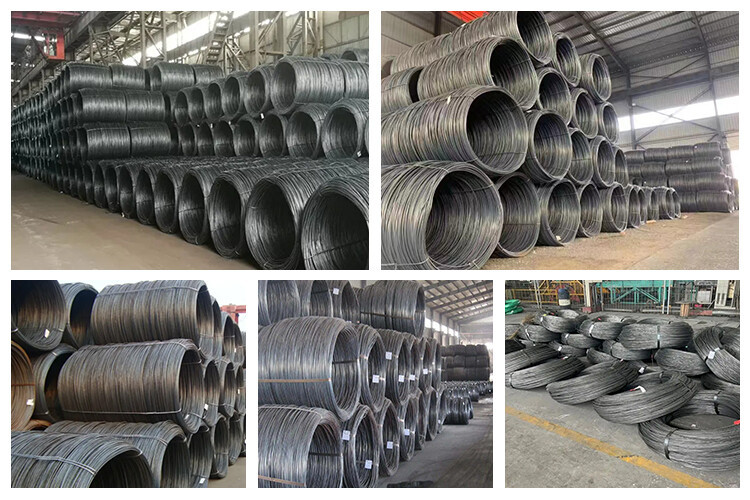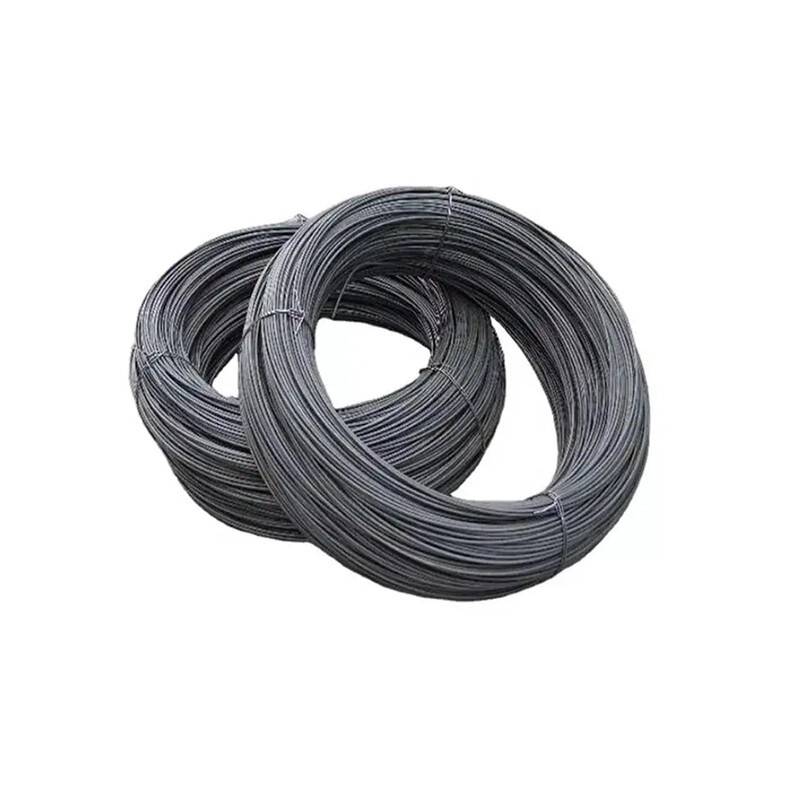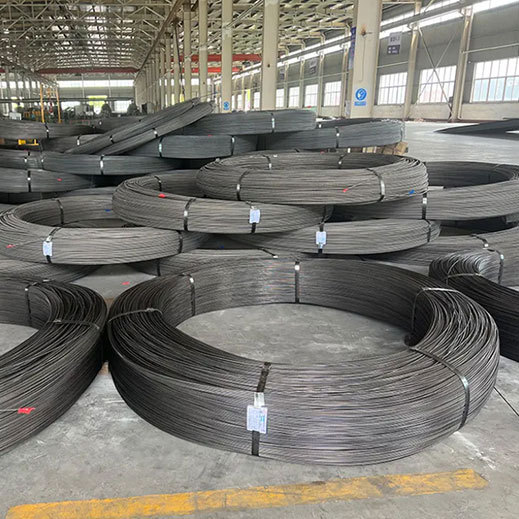PRODUCT
Introduction to Steel Deformed Rebar in Coil
Product Specifications
Product Processing
Factory Showcase
Steel Deformed Rebar In Coi-1
| |
| Steel Deformed Rebar In Coil is a kind of wire steel, which is characterized by spiral cross ribs on the surface, and usually appears in the form of disc-shaped coils and bundles. The advantage of Steel Deformed Rebar In Coil is that it can be cut into any length according to demand, which is suitable for steel bars with smaller diameters (usually less than 10mm), and needs to be straightened when used. Generally, the ones on the market are 6.5-8.0-10-12-14, which are all construction steel. | |
| 1. Steel Deformed Rebar In Coil model symbol | |
| The coil model symbol is a symbol in the coil model marking system. Its main function is to distinguish various types of coils. Coil model symbols usually consist of letters, numbers and special symbols. Different symbols represent different sizes, shapes, materials and other information. The coil model symbol is a very important part of the coil marking system. Its correct application can effectively avoid safety hazards caused by misuse of models. Therefore, when using coils, pay attention to correctly understand the meaning of the coil model symbol to avoid using the wrong model. | |
| (1) The coil model symbol generally contains one or more letters. Used to identify the material of the coil. Common material letter codes are: A: Aluminum B: Brass, Copper C: Carbon Steel, Cold Rolled Steel Plate F: Stainless Steel, Acid-Resistant Steel H: High Strength Steel, Alloy Steel L: Aluminum Bronze M: Martensitic Stainless Steel S: Ordinary Steel, Low Carbon Steel T: Titanium For example, the coil model symbol "FH-10" has "F" representing stainless steel and "H" representing high strength steel. | |
| (2) Numbers represent dimensions The numbers in the coil model symbol usually represent the dimensions of the coil, such as diameter, height, etc. For example, a coil with the coil model symbol "M5" represents a coil with a diameter of 5 mm. | |
| (3) Special symbols indicate other information Various special symbols in the coil model symbol can also indicate other information of the coil, such as shape, surface treatment, etc. For example, the "+" symbol indicates a coil with treated surface, while the "-" symbol indicates an untreated coil. | |
| 2. Common specifications and models | |
| HRB335 | The yield strength is 335MPa, with good plasticity and welding properties, suitable for general building structures such as residential buildings, office buildings, etc. |
| HRB400 | The yield strength is 400MPa, which is higher than HRB335 and is suitable for structures with higher strength requirements, such as high-rise buildings, large-span bridges, etc. |
| HRB500 | With a yield strength of 500MPa, it is a representative of high-strength steel bars and is suitable for structures with extremely high requirements for strength and toughness, such as large public buildings and special projects. |
| CRB550 | The yield strength is 550MPa, with high strength and good plasticity, suitable for prestressed concrete structures and thin-walled components. |
| RRB400 | The yield strength is 400MPa. Through the residual heat treatment process, it has good comprehensive mechanical properties and welding properties and is suitable for various building structures. |
CONTACT US
Steel Deformed Rebar In Coi-2
| |
| 1. Theoretical weight and size table of Steel Deformed Rebar In Coil | |
| Steel bar (wire rod) is a common steel material used in construction. Its theoretical weight table is very important for the calculation of steel bar usage and cost in engineering design and construction. The following is a table of theoretical weights and sizes of steel bars compiled based on the search results provided. Calculation formula for theoretical weight of steel bars The weight calculation formula for steel bars is: Weight (kg) = length (m) × cross-sectional area (square millimeters) × steel bar density (7.85 g/cm3) Among them, the cross-sectional area can be calculated by dividing the square of the steel bar diameter by 4, and the steel bar density is a fixed value of 4. |
| 2. Theoretical weight table of some common specifications of Steel Deformed Rebar In Coil | |
| Theoretical weight table of some common specifications of coils | |
| diameter(mm) | Theoretical weight(kg/m) |
| 6 | 0.222 |
| 8 | 0.395 |
| 10 | 0.617 |
| 12 | 0.888 |
| 14 | 1.21 |
| 16 | 1.58 |
| 18 | 2 |
| 20 | 2.47 |
| 22 | 2.98 |
| 25 | 3.85 |
Notes In actual use, in addition to calculating by formula, you can also use the steel bar weight table to quickly check the weight of coiled steel bars of different specifications. It should be noted that these data are based on internationally popular calculation rules, and the specific values may vary slightly due to different standards and calculation methods. In addition, in engineering design and construction, attention should also be paid to the storage and transportation of coiled steel bars to avoid damage and waste4. | |
CONTACT US
Steel Deformed Rebar In Coi-3
| |
| 1. Brief description of the processing flow of Ribbed Steel Rebar in Coil | |
| (1) Raw material preparation First, select a suitable billet, usually a square billet, whose chemical composition needs to meet specific requirements, such as the content of elements such as C (carbon), Si (silicon), Mn (manganese), P (phosphorus), S (sulfur) and V (vanadium) needs to be within a certain range. (2) Heating The billet is heated to a specific temperature range, usually between 1040 and 1100°C, to ensure that the rolling temperature is between 990 and 1020°C. (3) Rolling After heating, the billet is first descaled by high-pressure water, and then rough rolling, intermediate rolling and pre-finishing rolling are carried out. These steps involve the use of multiple rolling mills, each with a specific hole design to gradually roll the billet into the required shape and size. (4) Water cooling After rolling, the steel needs to be water cooled to reduce the temperature and improve its performance. The temperature of the cooled steel needs to be controlled within a specific range, such as 860 to 900°C. (5) Finishing and forming After water cooling, the steel is finished rolled to obtain hot-rolled coil. Subsequently, the hot-rolled coil is cooled again and finally spun into coil. Chemical composition control Depending on the specifications of coil, the proportion of chemical composition will also vary. For example, the contents of C, Si, Mn, V and other elements in coils of φ6mm, φ8mm-φ10mm and φ12mm will be different2. Process optimization In order to ensure product quality and performance, the production process of coil needs to be continuously optimized. This includes the adjustment of process flow, process parameters and process formula to ensure that the product can meet the national standard requirements3. The above is a brief description of the coil processing process, covering the key steps from raw material preparation to final product forming. | |
| 2. Application | |
| It is widely used in bridges, tunnels, high-rise buildings, docks, house construction and other fields. Especially in places with high groundwater level, rainy and humid areas, the use of wire rod snail can improve rust resistance; in high-rise buildings, the use of wire rod snail can increase the stability of the structure. |
CONTACT US

CONTACT US
Jincheng Metal Products (Tianjin) Co., Ltd.





